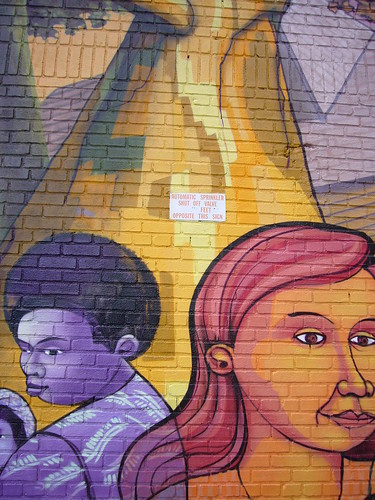I've done a bit of research on my neighborhood, Woodlawn in the Bronx, but my starting point is in the late 1800s. The street was less crowded; my lot of land was four times as big (it was divided into four lots later on); the neighborhood wasn't as built up. But The Mannahatta Project, spearheaded by Wildlife Conservation Society landscape ecologist Eric Sanderson, takes New York City back to 1609, the year of a New York-based jacht ride by Henry Hudson and crew.
In 1609, everything was nature (and nature was everything). A four-mile beach ran from the Battery to West 33rd Street; lots more hills populated the city, before they were levelled; Manhattan was narrower; and there were 54 "ecological communities" in all.
 Sanderson, whose office is at the Bronx Zoo and lives on City Island, is using 3-D pictures and the Muir web to determine what the City looked like before the humans invaded.
Sanderson, whose office is at the Bronx Zoo and lives on City Island, is using 3-D pictures and the Muir web to determine what the City looked like before the humans invaded. The Mannahatta Project aspires to minute verisimilitude, down to the varieties of moss, and will facilitate a kind of naturalist's version of George-Washington-slept-here. Eventually, Sanderson would like to put up plaques around town calling attention to this or that bygone pond or dune, or even to post recreations of 1609 vistas on the city's next generation of bus shelters. A visitor to Times Square, standing alongside the Naked Cowboy on the traffic island at Forty-fifth Street and Broadway, might be encouraged to see a convergence, under what is now the Marriott Marquis, of two freshwater creeks, one flowing out of a marsh beneath the headquarters of the New York Post, and the other from under the Jacqueline Kennedy Onassis High School. The creeks were dammed by beavers to create a red-maple swamp, frequented by wood ducks and elk. The idea of all this, of course, is to get us to appreciate the remnants of the natural world, even in this degraded place, and then to work harder to preserve them, here and everywhere else. Still, although Sanderson might not admit it, such visions also have a way of helping us to savor our particular range of degradations. We've made a fine mess.Harry N. Abrams is going to publish the book, though no publication date is mentioned. One of the more anecdotal portions of the article sees Paumgarten visit Inwood with Sanderson and Mannahatta project helper Markley Boyer. ("This is one of the few parts of Manhattan where you can get around successfully with a 1782 map," says Sanderson.)
The short paragraph about the human response to knowing this type of history was fascinating:
The attempt to strip one layer from the other, and to see where they match up, seems to simulate some as yet undiscovered cerebral nodes devoted to before-and-after visualization. The fantasy of depopulation, whether retroactive or futuristic, appeals to our sense of vanity and self-loathing. It may help explain the success of the book "The World Without Us," in which the author, Alan Weisman, describes what would happen to the earth if humans were no longer around. (In short, it would both bounce back and go to hell, in interesting ways.) It's Mannahatta in reverse. Weisman devotes a few pages to Sanderson's project, surmising that its findings will give us a clue as to what Manhattan would become in our absence. But, of course, the Manhattan of 1609 is lost. The city is far more than a flesh wound.I think that the human response to most things is completely self-centered, even by the most enlightened people. My first photography criticism professor, Bill Jenkins at Arizona State University, once asked our small class why the nude was the most-photographed subject. "Narcissism" was my immediate response, although I couldn't explain why. Jenkins told me at the next class meeting that he'd thought about my reply and understood. I'm not sure which of these characteristics - narcissim, vanity, self-loathing - are inherent to the group of human beings (ie: a group trait) and which are individual.
The World Without Us is now on my reading list. Looking at the book's website timeline (sparingly done to maintain interest in the book), The World Without Us is about the beginning of decay and the return to nature. The concepts of decay and birth are definitely linked, to what extent I have yet to decide; do they have the same relationship as birth and death?
The article isn't online in its entirety, but The New Yorker's website has an accompanying slide show.
NOTE: Since writing this post, I was informed that that this book will be published in 2009, coinciding with the quadricentennial of the explorations of Henry Hudson and Samuel de Champlain in 1609, as well as the 200th anniversary of Robert Fulton's first steamship voyage along the Hudson River.





